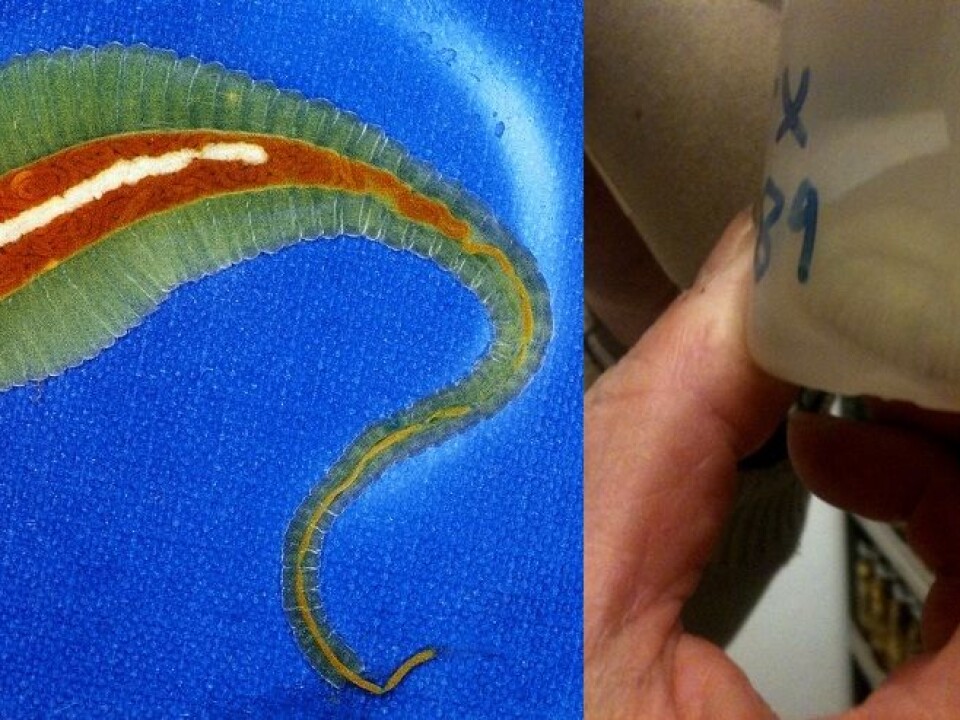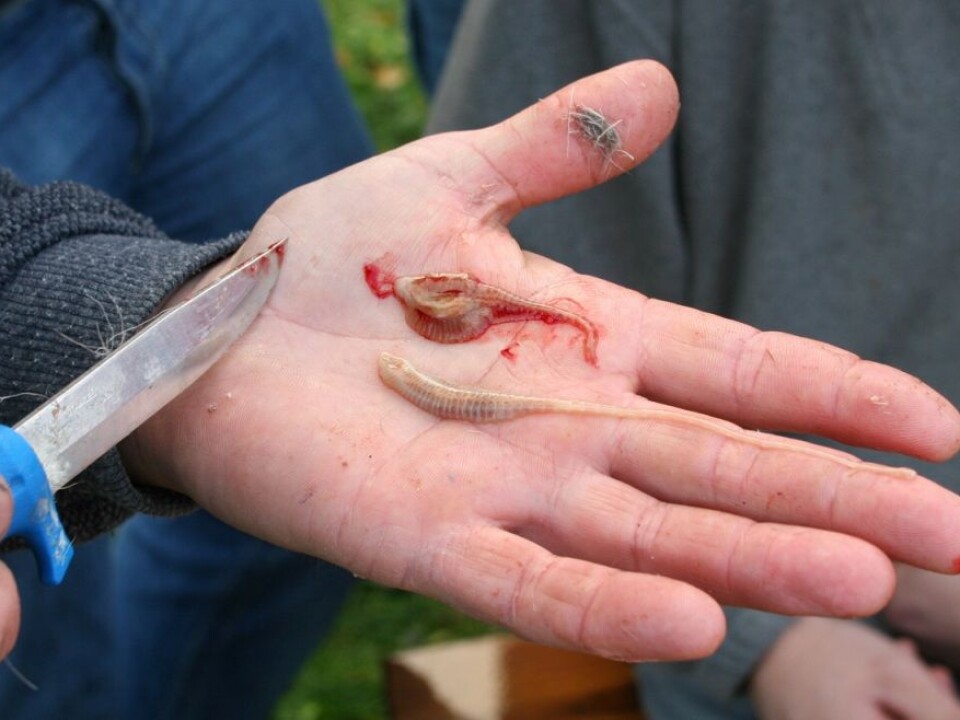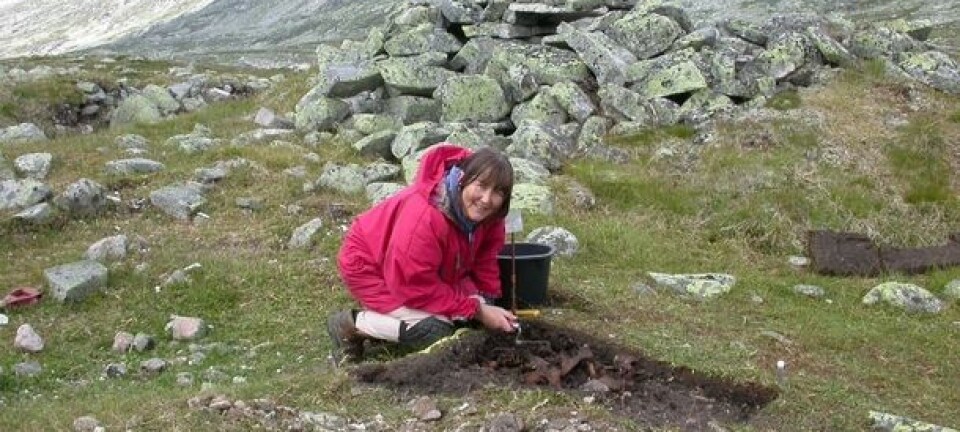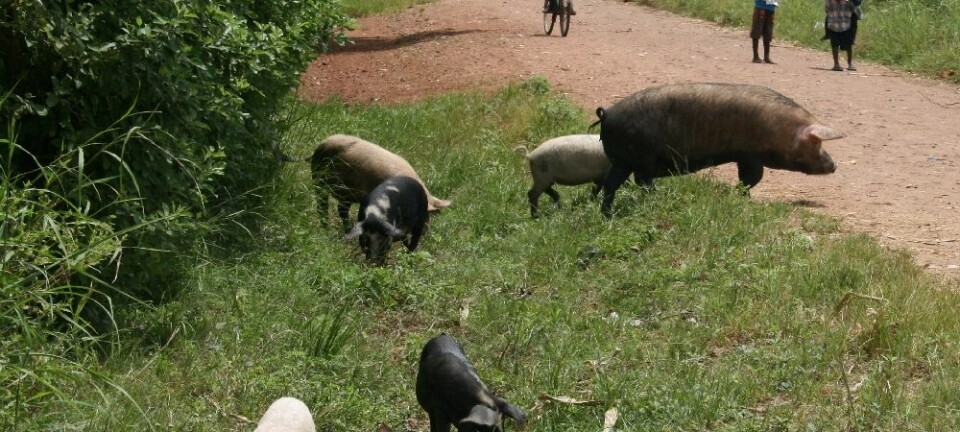
Nasty nasal parasite
A parasite found in a reindeer’s nose 25 years ago may not be the most appealing creature to most people, except for scientists.
Denne artikkelen er over ti år gammel og kan inneholde utdatert informasjon.
The collections hidden in museum storerooms are sometimes more exciting than the objects in the showcases. The basement of the Tromsø University Museum has what some would call a cabinet of horrors − creatures in glass jars such as octopi, snakes, seagulls and even a whale foetus.
But a tiny alien-like animal in a cloudy plastic cup is the favourite item of insect expert Arne C. Nilssen.
“Just look at that. Isn’t it great?” he remarks, holding the container up to the light.
This cup contains the first documented specimen of the reindeer sinus worm Linguatula arctica.

Nilssen had the honour of discovering the worm. If it were alive it could celebrate its 25th anniversary as a known species.
Chances are you’ve never eaten a reindeer head. But if so you could have had a very close encounter with this weird worm.
The original preserved in spirits
L. arctica is a type of tongue worm that lives in noses – or more specifically in the sinus cavities – of reindeer. The worm is actually a crustacean and a parasite that can only survive inside the body of a host. It has relatives that live in dogs, crocodiles and lizards.
But the reindeer version was totally unknown when Nilssen and his colleagues stumbled upon a specimen in 1987.
Nilssen studied a type of warble fly when the worm turned up while they were dissecting a reindeer head looking for the flies. After a lot of investigative work he determined that it was a new species.
"That was quite a thrill,” he says.
When a new species is defined and described, scientists have to preserve a so-called holotype. When applicable, a holotype – or type specimen – should consist of a male and a female to which all subsequent specimens can be compared.
“And here is the female holotype Linguatula arctica,” he says, as he shows the little worm swirling around in alcohol.
He says it’s incidental that this particular worm was selected − they had lots of individuals to pick from. But there it is, the one that will forever have played a role in scientific history.
- RELATED: Want to read more about parasites? Check out this article from the Norwegian University of Life Sciences, Scientists worry about parasite hosted by foxes, and this piece written by the Norwegian Veterinary Institute, Fighting parasites with parasites.
Larvae in the liver?
The L. arctica belongs to an enigmatic crustacean group called pentastomida, meaning they have five mouths.
Nilssen explains that the L. arctica is not the most ambitious of creatures. It appears to live a sedate and uneventful life inside reindeer.
The male has just one task: mating with a female, after which he dies immediately. The female lives a little longer because she has to deposit her eggs once they are fertilised. This is why the female is larger than the male – she has millions of eggs inside her.
“We actually don’t know much about this species. It has a larval stage and we think the larvae live in the reindeer’s liver or another internal organ. But we’ve never found them.”
A condiment or spice
The worm can be several centimetres long and they can be plentiful. Nilssen mentions a reindeer herd owner who found 40 of the worms in the head of a seven-month-old reindeer calf.
Fortunately reindeer don’t appear to be particularly bothered by this parasite.
Nilssen reckons the worm must have some effect on the reindeer, but the researchers haven't noticed any signs of the reindeer being irritated. But then again, they can’t ask the reindeer if these things hurt.
- RELATED: The great reindeer slaughter

L. arctica eats mucous, so it lives its adult life on a veritable silver platter.
The researcher finds it interesting that the Sami, who have herded reindeer for centuries, don’t have a name for these worms. They haven’t known about them. So it’s a pretty secretive creature.
The Sami often boil reindeer heads and that means they might end up eating these worms, he says. When boiled they would look a bit like a ball of snot. A spice to the meal.
“Yeah, they really are disgusting creatures, I’ll grant you that. But somebody has to study them too.”
Translated by: Glenn Ostling
———
Read this article in Norwegian at forskning.no

































